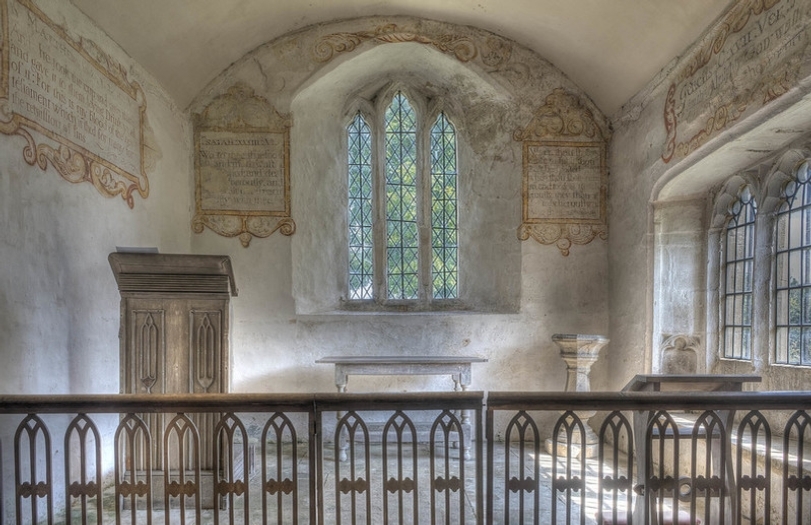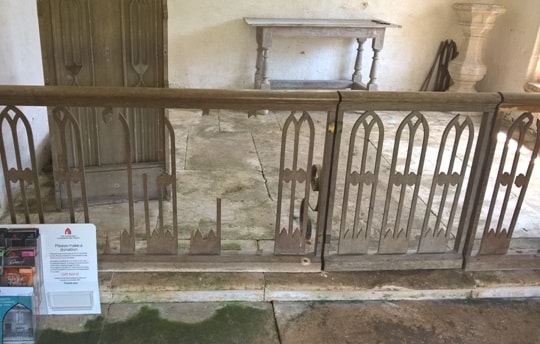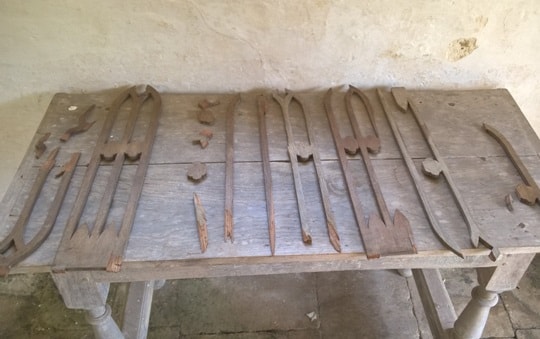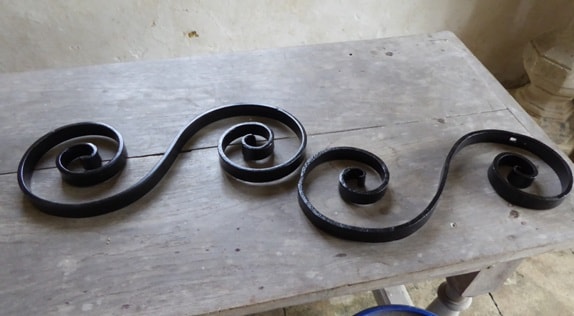Conservation work doesn't have to hide the past
Yesterday, we shared a story about our repair of a historic window at St Kenelm’s in Sapperton, which we think actually added to its beauty and interest. It is one of two recent conservation projects that we have had shortlisted for the prestigious John Betjeman Award run by the Society for the Protection of Ancient Buildings (SPAB). Here’s the second – a tale of vandalism with a happy ending at All Saints’ Church in Leigh.
An act of vandalism
Very occasionally, we get people in our churches who don’t look after them. One such occasion took place at Leigh in June 2017, when vandals attacked the building. They smashed the communion rail and south door, and put graffiti on the internal wall and 17th-century wall-painting. The building had to be closed until repairs could be undertaken. We asked Daglish Building Ltd to repair the rail and door, and wall-painting conservators Granville and Burbidge to remove the graffiti.
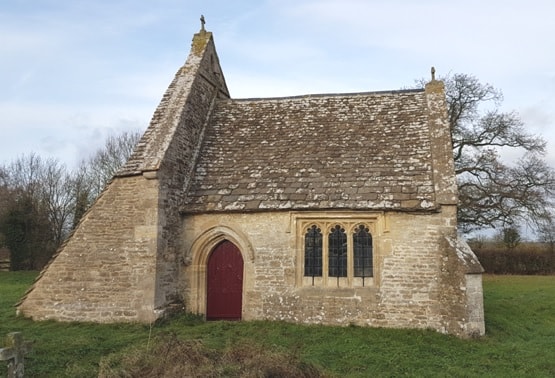
Repairing the communion rail
First of all, the broken fragments of the wooden communion rail were analysed. It turned out that in addition to the vandal damage, some areas of the rail had been badly affected by beetles. Despite this, much of it was found to be re-usable, although some small parts required replacement in order to strengthen the structure. The communion rail was dismantled in Adrian Daglish’s workshop, and details of the repairs were agreed with the architect Andrew Townsend.
Fractured individual sections were glued or pinned in place and reinforced where necessary. New timber was pieced in, and the rail was reconstructed. The existing iron scroll bracket which held it together was re-fixed, and a steel one was added on the other side of the central gate to increase its stability.
Making repair work visible
The new oak for the replacement sections was carefully chosen to correspond with the original wood. However, it was left in its ‘raw’ state, and no attempt was made to match the patina (surface effect) of the original. This means that it is clear to everyone who visits which parts are historic, and which are new. Similarly, the restorers resisted the temptation to clean and re-finish the original timber, which varies from section to section. These variations are due to the way light has fallen on the wood over the course of two centuries. It would have been wrong to erase that.
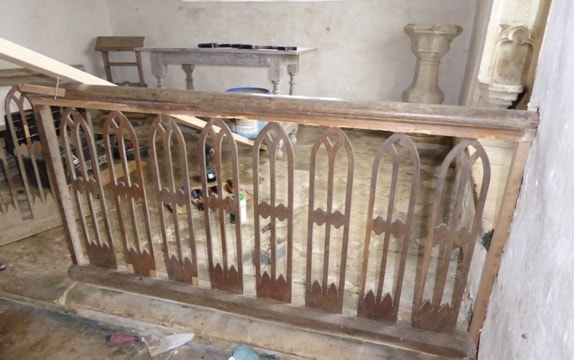
Letting the building speak for itself
We love the results of this repair work. It was a painstaking job to take all the smashed fragments and fix the jigsaw back together piece by piece.
The Society for the Protection of Ancient Buildings was founded by William Morris, among others. He believed that it was best to keep all the layers of history visible and to let the building speak for itself. We love the raw honesty of the new wood at Leigh. It tells the story of how it was smashed then lovingly repaired. It is a reminder of the care that goes into keeping these buildings open.
Support our conservation work Donate now

